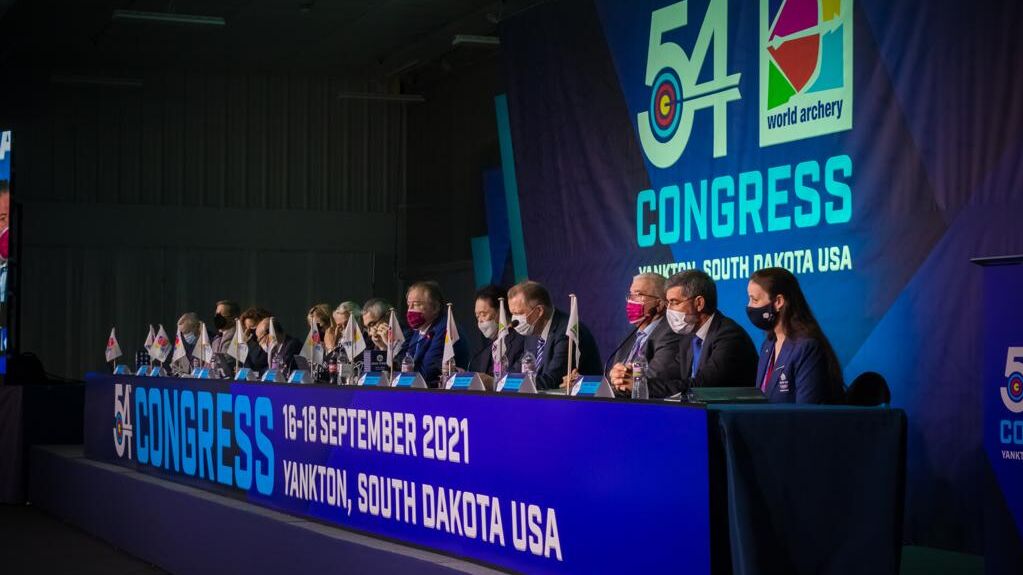Congress ratifies new strategic direction for World Archery

Delegates at the World Archery’s 54th congress have unanimously ratified the federation’s updated mission and vision statements, which were previously accepted by the executive board.
The new approach has three key pillars: member services, events and promotion.
Development, previously a standalone department, now becomes an organisational-wide focus.
In partnership with member associations and the continents, World Archery will work towards achievable milestones, for 2024 and 2028 and beyond, across each of the three pillars that track the growth and progress of the sport.
World Archery president Prof Dr Ugur Erdener spoke the words of naturalist Charles Darwin in his opening address.
“It is not the strongest of the species who survive, nor the most intelligent,” he relayed. “But the one most adaptable to change.”
Prof Dr Erdener, who will stand for re-election to a fourth and final term in the presidency tomorrow in Yankton, also highlighted World Archery’s corporate credibility, the importance of good governance and the success of the recent Olympics despite the challenges of the pandemic.
International Olympic Committee sports director Kit McConnell called in from Lausanne and praised archery’s contribution to Tokyo 2020.

Motions
Delegates voted on a number of changes to the rules during the first day of congress.
Among those that passed was a proposal to change the official naming of age groups (from cadet, junior and masters to under-18, under-21 and 50-plus), one to replace the instinctive discipline with a new traditional bowstyle, and another that gives the federation the ability to hold future congresses virtually, if necessary.
It will now also be permitted to shoot indoor rounds outdoors, a change brought about after last winter’s virtual Indoor Archery World Series, which saw athletes compete wherever they could safely find the space during the pandemic.
The motion to add barebow to the target archery world championships did not pass, receiving only 82 of the 191 available votes, far short of the two-thirds majority required.
Qualifying will also remain at 72 arrows, rather than reduce to 60. That proposal received 97 votes in favour.
The 11-ring scoring for compound archers outdoors also failed to pass (and the accompanying proposal for indoor archery was subsequently withdrawn).
The motion to shrink the recurve 70-metre target face from 122 to 100cm was also withdrawn at the request of the target archery committee, which brought the initial proposal to the congress floor.

Bylaws, members and more
The executive board also approved a number of bylaws during its meeting ahead of congress. Among them was the removal of para archery’s team event – and its replacement with a doubles competition using the same rules as the mixed team but with a pair of athletes of the same gender.
This change, along with the passed motions, comes into effect on 15 January 2022.
During congress, non-binding votes were held on several other subjects to gauge the opinions of members.
Support was lent to reducing shooting time during qualifying to 30 seconds per arrow (plus 10 for para archery) and the creation of continental leagues for clubs, while the idea of splitting the recurve and compound world championships did not find a majority.
Member associations in Bahrain, Jamaica, St Vincent and the Grenadines, and Yemen were accepted as full members during the session, while Suriname was expelled, leaving the membership at 166 nations.
Congo, DPR Korea, Laos, Lebanon, Senegal, Togo and Tonga were given final warnings.
Delegates also approved the minutes of the previous congress, received financial reports and had the opportunity to pose questions to the chairs of each of the permanent and ad hoc committees.
Congress continues with elections on Saturday 18 September 2021.











